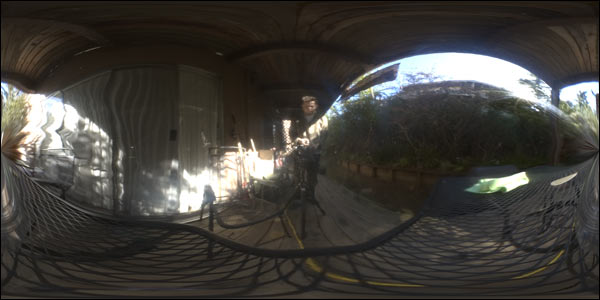

But ‘fake HDR’ versus ‘real HDR’ is a wrong way to frame this distinction.
#HDRI LOOKS DARK BRIGHTER 3D TV#
Of course, as noted above, consumers don’t buy an HDR TV to see something that looks a lot like SDR.

The only line that can be drawn objectively is SDR’s 100 nits. Will we look at 1,000-nit movies then as ‘fake’ HDR? Let’s hope we won’t. It's a wider range of luminance, so deeper blacks and brighter highlights, especially specular highlights – light reflecting off shiny objects.Īnother question is where to draw the line? We may think of 1,000 nits as bright now but in a few years 10,000 nits may be achievable. Image credit: Disney+ / HDTVtest The issues as stakeTo begin, let’s please get one common, deep-rooted misunderstanding out of the way: that HDR is about overall brighter pictures. Is that right? The creators beg to disagree.įalse-color 'HDR heatmap' image of The Mandalorian showing the luminance levels of all picture elements. This latter category Vincent calls “fake HDR”. Some of these such as The Matrix have a high luminance level that peaks at over 1,000 nits while others such as most of the Star Wars movies and Blade Runner only get to about 200 nits. He’s been evaluating The Mandalorian, Star Wars and Mulan on Disney+ and Mad Max: Fury Road, Star Wars: The Rise of Skywalker, Star Wars: The Last Jedi, Blade Runner 2049, The Matrix, The Greatest Showman, Wonder Woman, Alita: Battle Angel as well as Rogue One: A Star Wars Story on Ultra HD Blu-ray. Lately, he – together with Adam Fairclough – has produced a string of videos where he checks how bright HDR movies get in terms of nits. Some movies will be more suited for that than others.įake HDR? Vincent Teoh of HDTVTest nowadays runs a YouTube channel with lots of videos about UHD TVs, display technologies, and UHD movies. They may want to impress their friends, wow their relatives or simply enjoy the new possibilities they’ve got and justify the purchase. Naturally and understandably, a lot of people who buy an HDR TV want HDR content to show off the capabilities of their new set. It’s also fair to state that while HDR is quickly gaining acceptance in Hollywood movies and productions of streaming platforms, it’s virtually nowhere yet in broadcast TV. It’s fair to state objectively that HDR is common in all TVs sold currently and is making inroads in the installed base of TV sets at a predictable rate, given the stable replacement cycle of TVs. If yes, you’ll probably agree that HDR is still pretty new and mostly unknown to the mass consumer. If you’re reading this you probably have some idea what HDR is, what it means.


 0 kommentar(er)
0 kommentar(er)
